- Modern Builder
- Posts
- Next-gen brands are platforms
Next-gen brands are platforms
And communities are at the core of it
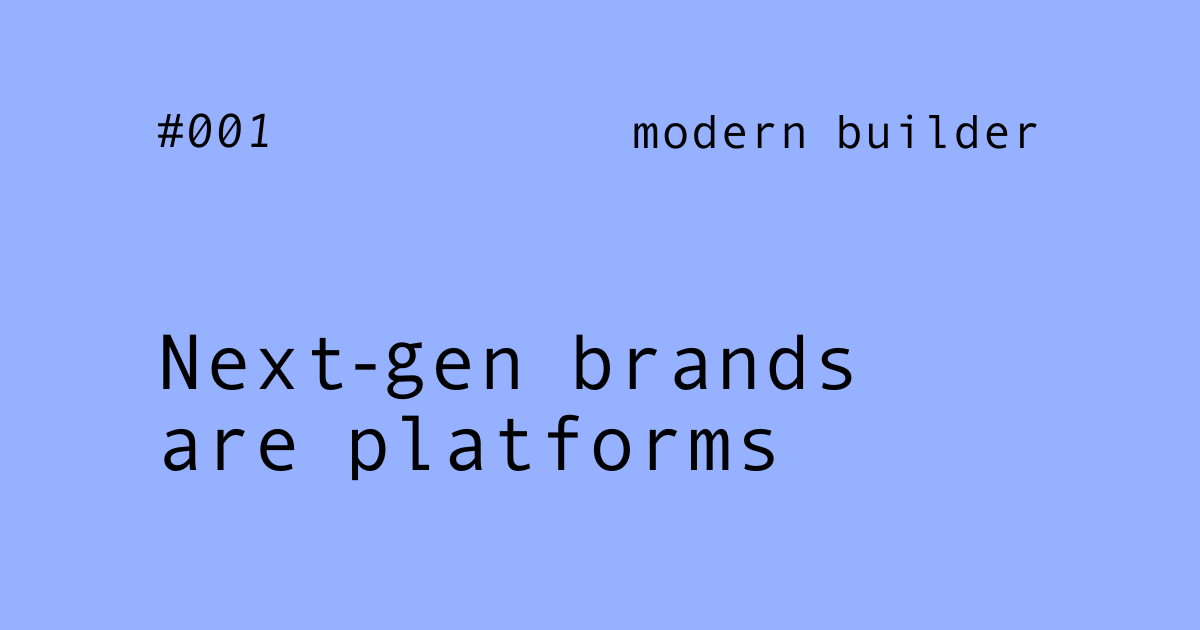
Hello modern builders!
I hope you’ve been well.
Excited to share the first edition of my newsletter with you!
For context, next gen builders are not just building products or communities.
The new trifecta of (modern) building consists of:
Creating content to build an audience
Turning audience into a community
Building products for and with them
Along these 3 pillars, there are a few topics (that keep me up at night) I want to write about so you can expect articles every 2 weeks for the upcoming months.
Once I am done with exploring those topics, I might come up with another structure and share more “how to” guides as well. Feel free to reply to this email and let me know what topics you're interested in reading more about.
In this first issue we’ll be exploring the next iteration of brands - as platforms.
You will learn about:
How I’m out of touch with everything happening on (Beauty) Tiktok
The evolution of brands: From ownership & quality marks to platforms
The 4 elements to build a brand as a platform (the PCCP framework) and the role of community & emerging tech
The next evolution of brands: Will brands become protocols?
Let’s dive in!
Brands are turning into platforms and communities are at the core of it
I hung out with my 15-year-old niece recently, and she filled me in on what has been happening on beauty TikTok, where she's gained a significant following. (For context: She is half my age, spends way more time on Tiktok than I do, and is way more into beauty products than I am. It feels like I’m exploring a new world through her eyes).
Her GRWM ("Get Ready With Me") videos are a big hit. She frequently reviews beauty products, some of which are sponsored, while others are simply for her own fun.
One thing she's very proud of: Her idea for a new lip balm got implemented by a smaller brand. When I asked if she got paid for it, she said, "Even better! They shared my video and told me I'm a core part of their brand now."
When I brought up the topic of attribution, she responded, "Attri what?" Clearly, that's a conversation for another day.
But there’s something there, her feeling that she’s core and active part of the brand.
We're experiencing an evolution of what makes a brand a brand, and communities are at the center of it.
The evolution of the brand
The concept of a "brand" has changed a lot over time.
Brand → ownership & quality
In the earliest days, it was quite literal: a brand referred to a mark burned onto livestock to indicate ownership. It later evolved to serve as indicators of product quality.
Brand → positioning
With the advent of mass production, a brand became a way for emotional and psychological differentiation, especially as products began to look and feel the same.
Brand → company
By the late 20th century, a brand represented not just products but the entire consumer experience and business identity. For instance, when we refer to Nike today, we're talking about the whole company, not just the branding itself.
Brand → platform
Now, we're witnessing another shift: brands are turning into platforms.
They are becoming places where people not only buy stuff but also create things - just like my niece is doing.
Side note: The concept brand platform is being used in marketing to describe a marketing document establishing the brand strategy and guide all marketing decisions. What I am referring here is the modern brand “as a platform”.
So what’s next for brands?
The next wave of consumer brands, especially those that are digital and web3-native, are not simply selling products, but are becoming platforms. Communities are at the core of this evolution, contributing through content, products and partnerships.
Emerging tech like web3 and AI are accelerating this evolution.
What is a platform (vs a pipeline)?
At its core, a platform is a system that facilitates (positive) interactions across an ecosystem - typically between creators and consumers.
I have worked on different platforms over the years, this is how we approached it:
In the traditional pipeline business, you make a product and sell it. But in a platform business, you provide a space where users can both create and consume.
Think of it like selling lemonade:
In a pipeline business, you make lemonade and sell it. That's it.
In a platform business, you set up a park where kids can also sell their own lemonade. You give them tables and signs, and they give you some of their earnings as a thank-you.
While Apple's iPhone is part of its pipeline business, the App Store serves as a platform, connecting app developers with users.
So where does the value come from?
The real value often doesn’t come from the platform itself but from the ecosystem that forms around it - developers, creators and consumers.
As more people join and contribute to the platform, its value increases exponentially for all involved. Welcome network effects.
This is what is currently happening with my niece’s beloved brands.
The evolution of platforms
The concept of platforms isn't new; it dates back to the 20th century.
Over the years, more and more traditional products have been platformized:
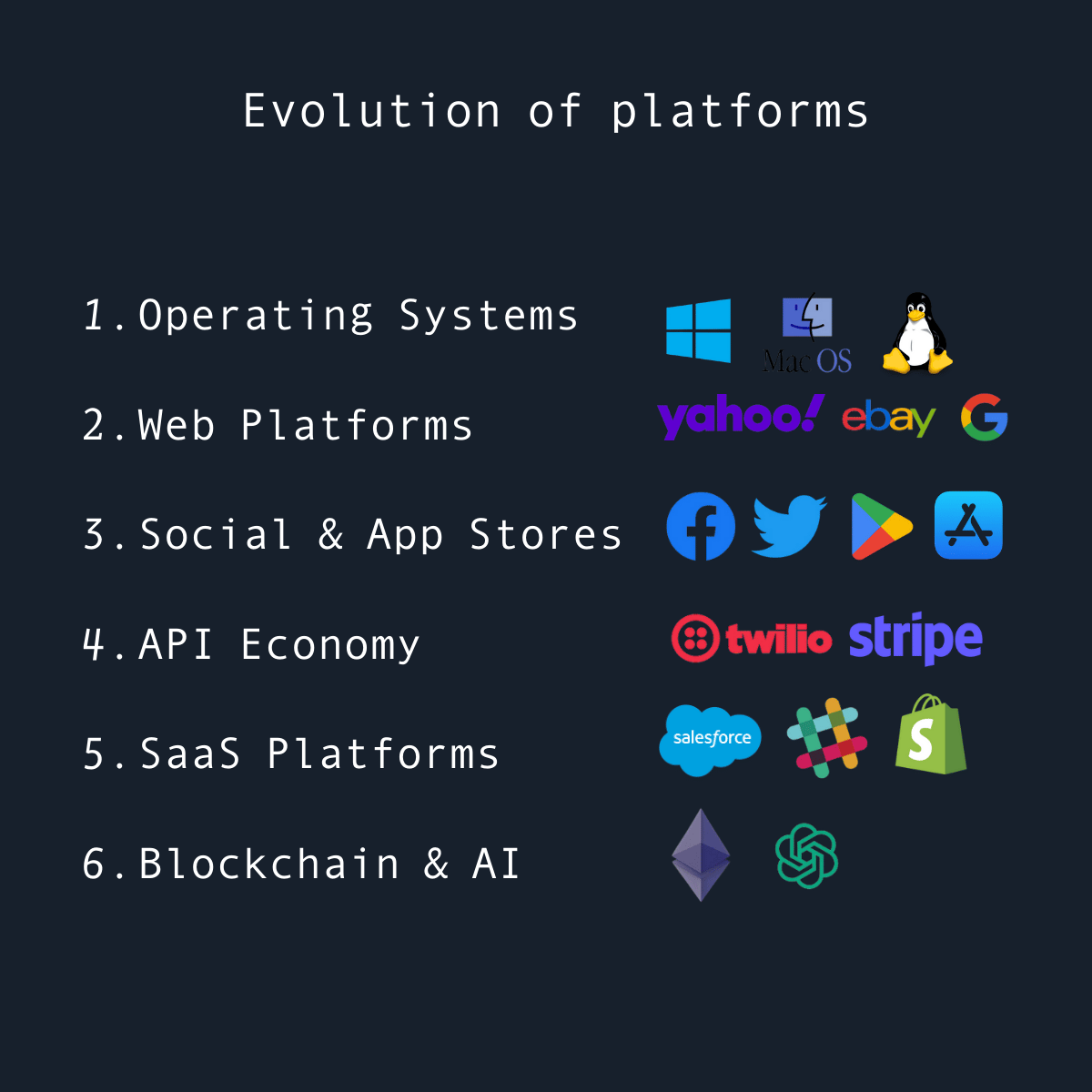
This platformization trend is not limited to brands, we are seeing communities (topic of a future article) turn into platforms as well.
The 4 elements of a brand as platform
(And how to turn your brand into a platform)
There are 4 elements to these next gen platforms.
Introducing the PCCP framework:
Product
Content
Community
Partners
Product
The product is not merely a (digital or physical) good or service; it's part of a broader narrative. Think Nike “Just Do It” for example, Patagonia being “in business to save our home planet” or Lululemon with “Be Human, Be Well, and Be Planet”. In the very best cases, they empower consumers to buy into not just a product but into a movement.
Traditionally all these products have been developed centrally, but we are seeing a shift to User-Generated Products (UGP).
Prime example is Nike’s .SWOOSH:
Nike first engaged the community through their OurForce1 community curation, allowing .SWOOSH members to vote on favorite Air Force 1 styles. In January 2023, they launched the Your Force One contest, where 4 winners got to co-design sneakers for the upcoming OurForce 1 collection and share in the profits. By April, Nike distributed 106,453 free virtual posters to engaged .SWOOSH members.
Remember the lip balm idea of my niece? A prime example of UGP.
How emerging tech contributes to UGP: web3 lets you attribute and reward your community, while AI lets them create things they couldn't create before.
Side note: We are seeing the emergence of brands starting as community-first, and building products as a next step. Jump to community to learn more about that.
Content
Content is at the core of every brand.
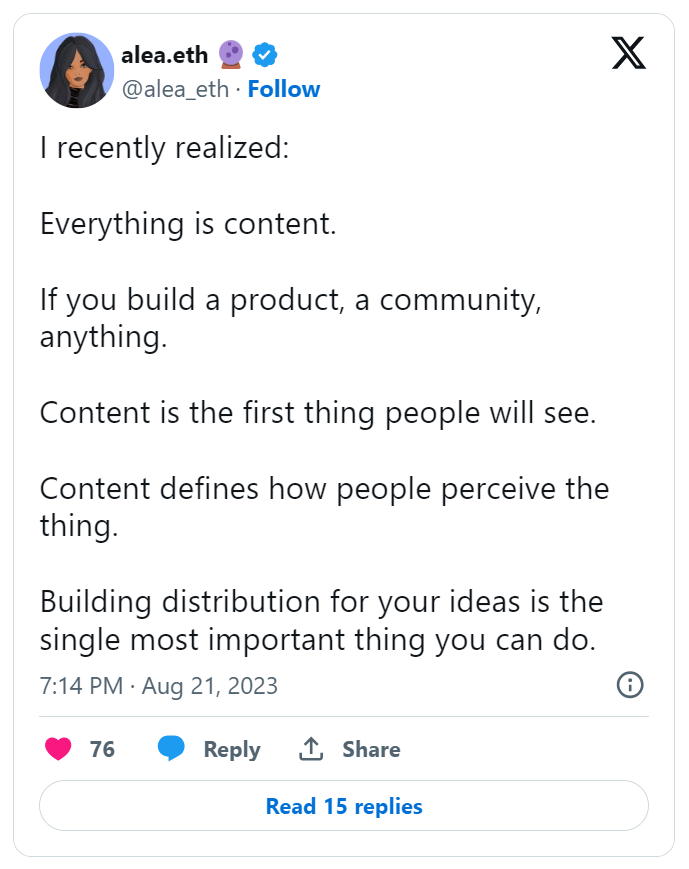
Today authentic stories or reviews from actual users often outweigh the impact of top-down content or paid promotions. They also form the basis of attention flywheels, inspiring other consumers and creators to try the products.
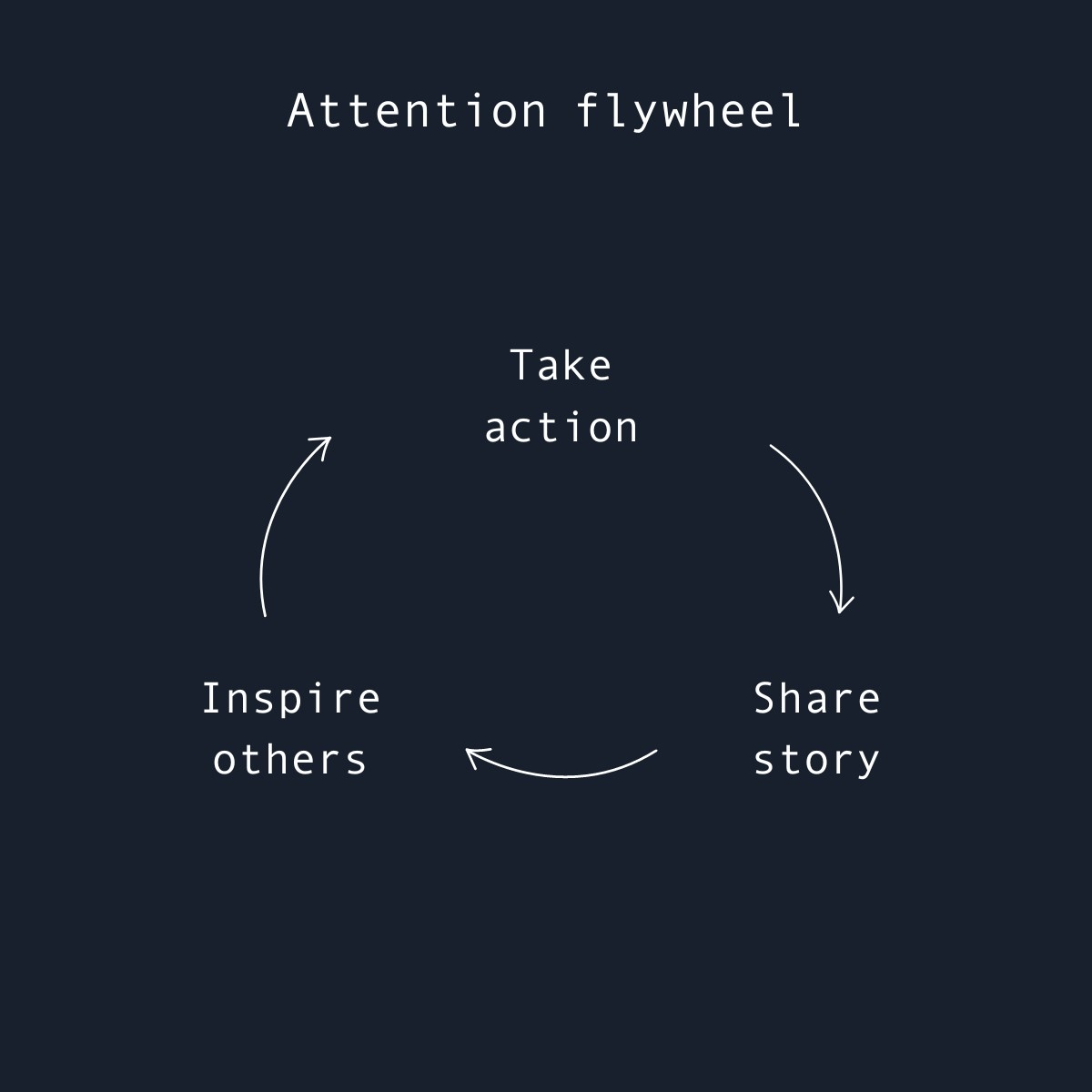
Again, we are seeing a shift to User-Generated Content (UGC), more bottom up than top-down.
Remember my niece and her product videos? A clear case of UGC.
Same as for UGP, web3 enables attribution and rewards, while AI can be used to create and even identify UGC through image recognition.
Community
Both UGP and UGC are based on a thriving community. Interestingly, communities themselves are turning into platforms, becoming a space that facilitates interactions between its members (more on this in an upcoming article).
Brands like Glossier, Peloton, Lego and Harley Davidson are great at fostering and engaging their community.
Also, we are seeing more and more community-first brands (often web3 native) emerging, such as Boys Club, Safary and Poolsuite.
It comes down to creating a space for members to exchange around - who would have guessed - content and products. And find ways to reward them and let them form an identity around the brand while automating community operations - all enabled by emerging tech.
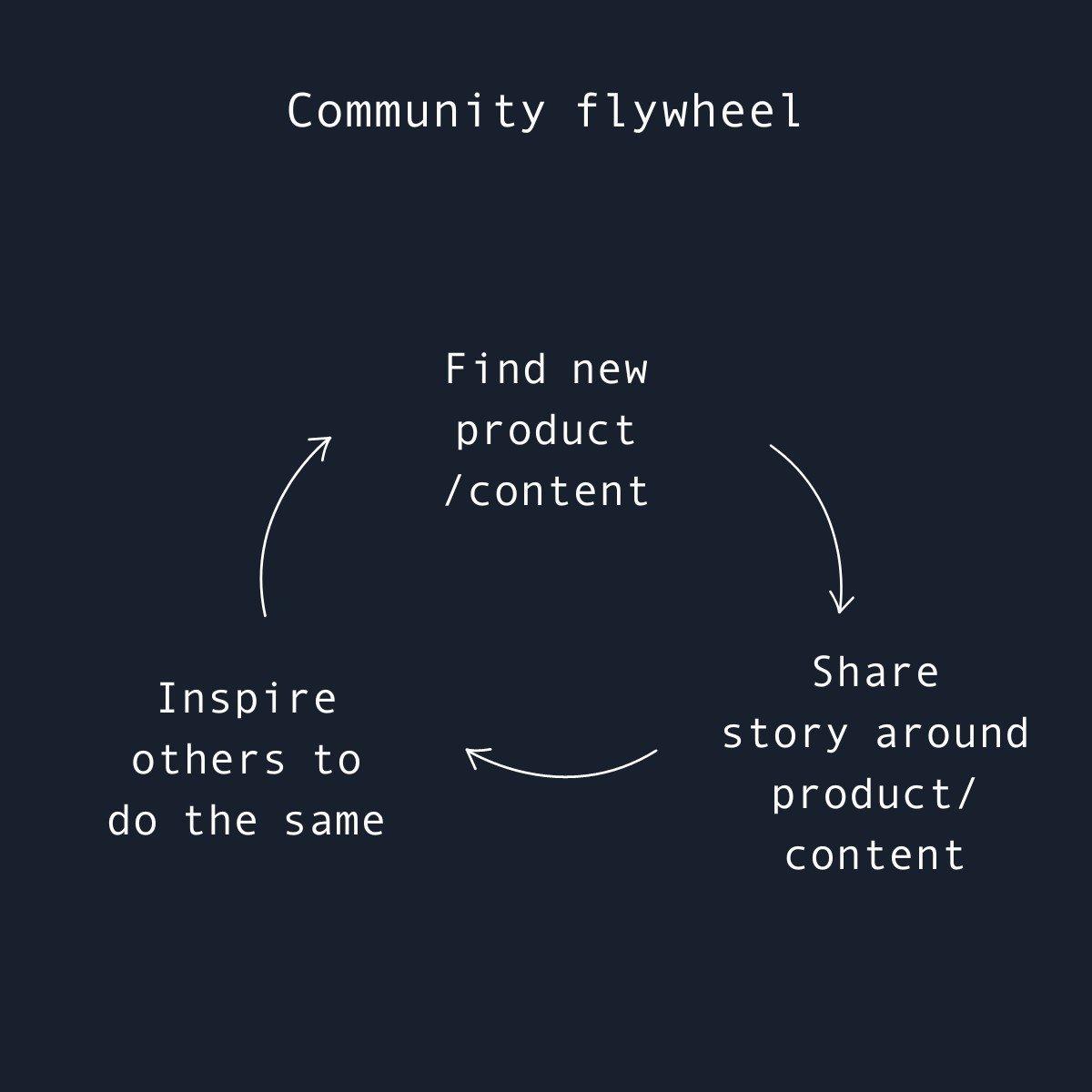
Partners
There is one pillar left to build an ecosystem around a brand platform: Collaborations with other brands to expand reach, diversify offerings and share costs and resources. Think Spotify & Starbucks, Balenciaga & Crocs, BMW & Louis Vuitton.
The way brands collect customer data has been isolated up until now. New user data, such as wallet activity, makes it possible to gather public data - and enable brands to target the user base of other brands. This unlocks opportunities such as seamless multiplayer loyalty - without the hassle connecting two different datasets.
Other partnerships (among many others) include:
Where does the value go to?
As mentioned earlier, the real value often doesn’t come from the platform itself but from the ecosystem that forms around it.
But where there is value creation, there is always the question around value capture.
Platforms the way we know them are mostly walled gardens, mainly benefiting its owners. As brands become platforms, it's crucial to better distribute value to community members. People like my niece that have amazing ideas.
How to ensure that?
You need a mix of adaptive policies, tech to attribute value to community members and reward them and forms of bottom up governance.
Outlook: Brands as protocols?
So brands are platform - but is this the end game? What comes next?
The next evolution could see brands becoming protocols.
In the simplest terms, a protocol is a set of rules that govern how things interact within a system.
They have been rather technical so far (centered around technical standards and infrastructure, especially web3 infrastructure), but if we strip it down to first principles a brand could become a protocol as well.
What is needed for that:
Collaboration and standards: Establishing a “blank canvas” with some guidelines for building on top of the “mother brand”, collaborating with other brands & sharing resources
Some form of community governance: Involving brand communities in decision-making and direction
Ownership & incentive programs: Engaging customers to build brand equity together
This would allow anyone to build upon the brand, taking User Generated Products and Content to the next level and making the community true stakeholders in the brand's future.
We are seeing the early stages of decentralized, bottom up brand-building. Will show some examples in a future issue.
Brands are changing in exciting ways, becoming platforms (or even protocols) that bring people together under a shared narrative. We can expect to see more of this soon.
In the coming weeks, I'll explore some of the topics mentioned in the article (+ other cool topics) one at a time. I'll share case studies of real-life examples to demonstrate shifts that are happening.
I will be experimenting quite a bit, so would love to hear your feedback.
That’s it for my first newsletter issue!
Please let me know if you liked this week’s edition and help me improve. Just reply to this email. I’m eager to hear your feedback!
Happy building,
Anna